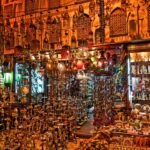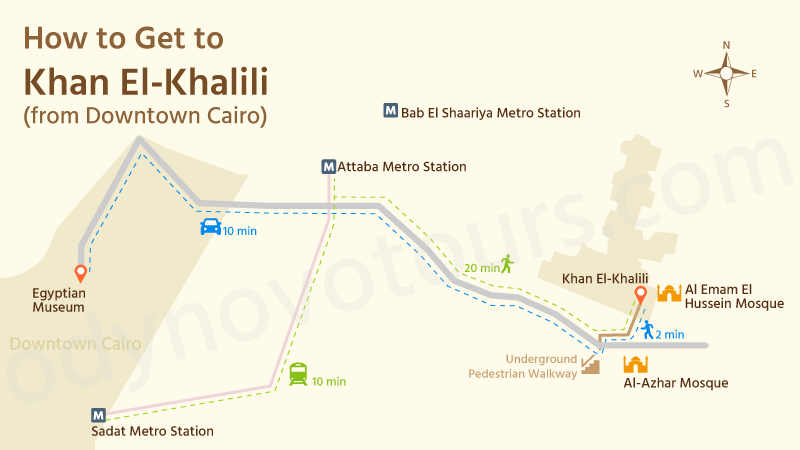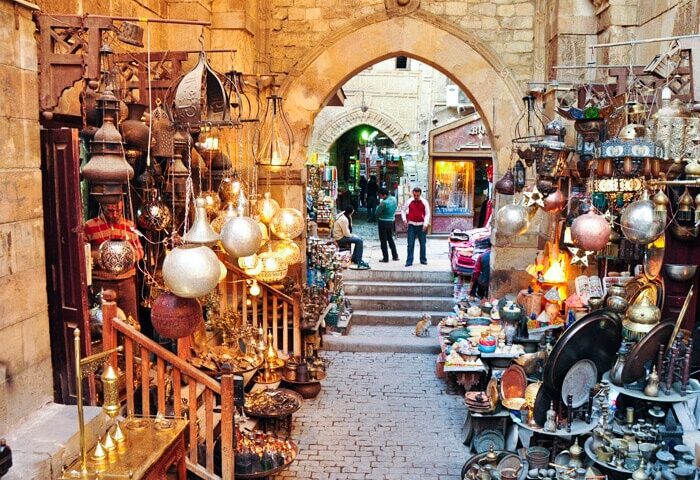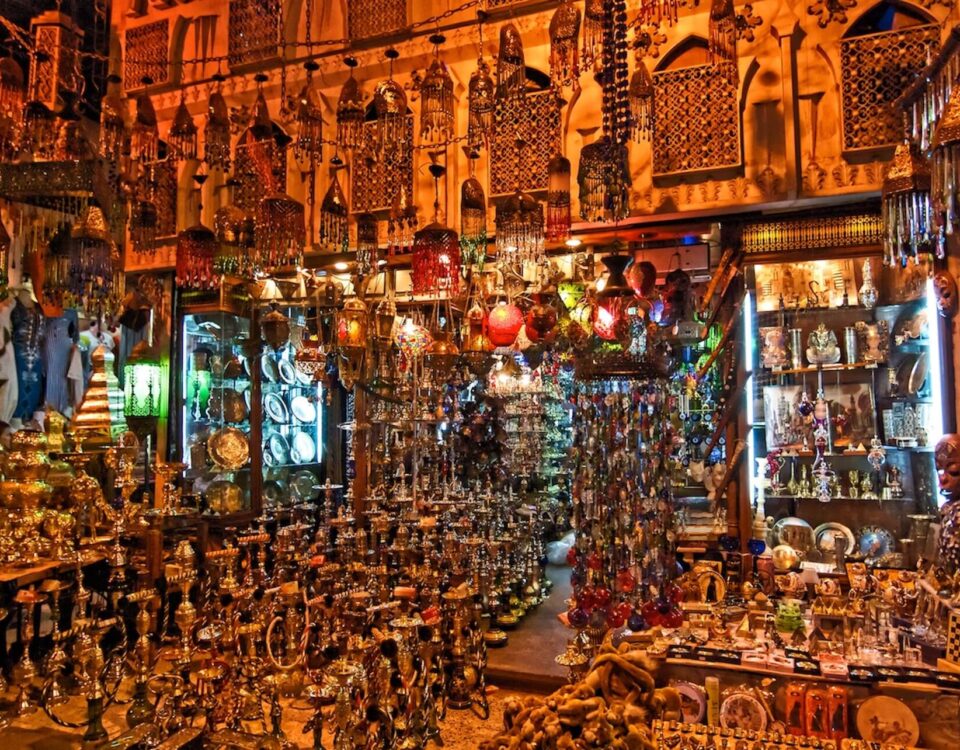
The History and Cultural Significance of Khan el-Khalili Bazaar
October 30, 2025
Top Cafés and Traditional Tea Houses in Khan el-Khalili
November 1, 2025Imagine stepping into a labyrinth where the air is thick with the scent of spices, the sound of haggling echoes off ancient stone walls, and every turn reveals a treasure trove of colorful crafts. That’s Khan el-Khalili Bazaar in Cairo, Egypt—a living, breathing slice of history that’s been captivating visitors for centuries. As a local who’s wandered these alleys more times than I can count, I know the thrill of discovery here can quickly turn into frustration if you’re not prepared. But fear not: this guide will arm you with insider tips to explore without getting turned around. Whether you’re hunting for souvenirs or just soaking in the atmosphere, understanding a Khan el Khalili map—both mental and literal—is your key to unlocking the magic.
Khan el-Khalili isn’t just a market; it’s the heart of Islamic Cairo, a UNESCO World Heritage site that pulses with the energy of traders, artisans, and tourists alike. Established in the 14th century during the Mamluk era, it was named after the caravanserai (khan) built by Sultan Barquq’s master of stables, Jaharkas al-Khalili. Over time, it evolved into a sprawling souk, surviving plagues, conquests, and modern tourism. Today, it’s a must-visit for anyone in Cairo, blending medieval architecture with vibrant commerce. But with its maze-like layout, even seasoned locals occasionally pause to get their bearings. That’s why I’m sharing my tried-and-true strategies to navigate it like a pro.
The History and Charm of Khan el-Khalili
To truly appreciate navigating Khan el-Khalili, you need a bit of backstory. Founded around 1382, the bazaar sits on the site of a former Fatimid palace and royal mausoleum, which was demolished to make way for commercial hubs. By the 15th century, it had become Cairo’s epicenter for trade in spices, precious stones, and even slaves. Sultan al-Ghuri in the early 16th century reshaped the district with grand constructions, creating the intricate network of alleys we see today.
What draws people back? It’s the sensory overload—the gleam of brass lamps, the aroma of hibiscus tea, the chatter in Arabic and broken English. As a local, I love how it preserves Egypt’s artisanal traditions. Goldsmiths hammer away in tiny workshops, perfume makers blend essential oils, and carpet weavers showcase intricate patterns passed down generations. But amid this charm lies the challenge: the bazaar spans several blocks, with no straight paths and countless dead ends. That’s where a solid grasp of the Khan el Khalili map comes in handy.
Decoding the Layout: Your Mental Khan el Khalili Map
Think of Khan el-Khalili as a spiderweb, with major arteries branching into narrower veins. The main entrance is near Al-Hussein Mosque on the eastern side, a grand Ottoman-style landmark that’s impossible to miss. From there, the bazaar radiates westward toward Al-Azhar Mosque and southward into quieter residential areas.
Key streets to memorize:
- Sharia al-Muizz li-Din Allah: This historic thoroughfare runs north-south, lined with mosques and madrasas. It’s your north star—stick to it if you’re lost.
- Sharia al-Badistan: Heading west from the main square, this is the gold and jewelry hub. Narrow but bustling, it’s where deals are made.
- Sharia al-Gamaliya: To the north, this leads to spice markets and antique shops.
The bazaar is loosely divided into sections: the touristy core around Fishawi Café (famous for its mint tea since 1773), the gold souk in the center, spice alleys to the north, and copper/brass workshops to the west. For a visual aid, many apps like Google Maps offer a basic Khan el Khalili map, but they’re not always accurate in the tight alleys—GPS can glitch here. Instead, pick up a printed map at the entrance or use landmarks like the towering minarets of Al-Hussein as reference points.


Pro tip: Enter from Bab al-Badistan gate for a less crowded start. From there, you can weave toward the heart without the initial overwhelm.
Insider Navigation Tips to Avoid Getting Lost
As a Cairo native, my first rule: Embrace the chaos, but have a plan. Here’s how to traverse Khan el-Khalili without circling back endlessly:
- Start Early or Late: Mornings (around 10 AM) are quieter, perfect for mapping out routes. Evenings bring lights and energy but more crowds. Avoid Fridays post-prayer when it’s packed.
- Use Landmarks as Anchors: Al-Hussein Mosque is your eastern beacon; Al-Azhar to the south. Spot the Wikala al-Ghuri (a 16th-century inn) for cultural shows—it’s a central pivot point.
- Download Offline Maps: Apps like Maps.me work without data. Search for “Khan el Khalili map” beforehand and save it.
- Set Meeting Points: Traveling with a group? Agree on spots like Fishawi Café or the main entrance. If separated, locals are friendly—ask for “Al-Hussein” to regroup.
- Follow the Flow: Main paths have more foot traffic; side alleys lead to hidden gems but can loop. If lost, head uphill or toward minarets—they’re visible from afar.
- Hire a Guide (Optionally): For first-timers, a local guide can share stories and shortcuts. But if you’re adventurous, go solo—getting a bit lost is part of the fun!
Remember, the bazaar isn’t huge—about 1 sq km—so worst case, you’ll exit onto a main road like Sharia al-Azhar.
Must-Visit Sections and What to Buy
Once oriented, dive into the sections. The gold souk gleams with intricate jewelry—bargain for cartouches or earrings. Spice alleys overflow with saffron, cumin, and hibiscus; sample before buying. For crafts, head to brass and copper areas for lanterns and trays. Don’t miss the perfume souk for custom attars or the textile zone for scarves and galabiyas.
As a local, I recommend authentic buys: Papyrus paintings (ensure they’re real, not banana leaf fakes), alabaster statues, or hand-blown glass. Avoid overpriced tourist traps near the entrance—venture deeper for better deals.
Bargaining Like a Local and Where to Eat
Haggling is an art. Start at half the asking price, smile, and walk away if needed—they’ll call you back. Pay in Egyptian pounds for better rates.
Fuel up at El-Fishawi for ahwa (coffee) or karkade (hibiscus tea). For meals, try koshary at nearby spots or kebabs at Naguib Mahfouz Café, named after the Nobel laureate who wrote about the bazaar.
Safety and Etiquette Tips
Khan el-Khalili is safe, but watch for pickpockets in crowds. Dress modestly (cover shoulders/knees), especially near mosques. Respect prayer times, and always ask before photographing people.
FAQs
What’s the best way to get to Khan el-Khalili? Take the metro to Ataba or Bab El Shaariya station, then walk 10-15 minutes. Taxis or Uber drop you at Al-Azhar Mosque.
Is there a detailed Khan el Khalili map available? Yes, printed maps at entrances or online via Google Maps. For in-depth, check sites like Maps-Cairo.com.
How long should I spend there? 2-4 hours for a quick visit; a full day to explore deeply.
Can I visit at night? Absolutely—it’s magical with lights, open till late.
What if I get lost? Ask locals for “Al-Hussein Mosque” or use your phone’s compass to head east.
Final Words
Khan el-Khalili isn’t just a bazaar; it’s Cairo’s soul, where history meets hustle. With this guide and a basic Khan el Khalili map in mind, you’ll navigate confidently, uncovering treasures and stories along the way. Remember, the best adventures come from a little wandering—so go forth, haggle hard, and let the souk enchant you. Safe travels, and may your bags be filled with memories!


